Masklab is a mask company that has recently become very popular as they offer a unique proposition that few before them have – a high-performance disposable mask that isn’t only good-looking but stylish.
While many reusable mask companies focus on creating fashionable masks, it’s rare to see this same style in disposable masks. Instead, where you can find it, it’s usually accompanied by low-performance surgical masks that offer less protection than their ‘boring’ counterparts.
Luckily, in the case of Masklab, this is not true. Not only do they offer fashionable masks, but they do so without sacrificing performance. While form is important, there is no denying that function is key for masks. As such, this balance is essential but challenging to achieve – Masklab appears to have done so.
I came across one of Masklab’s stores in Seoul, and, being a mask enthusiast, I just had to walk in. I was pleasantly surprised by the fantastic range of elegant, fun, and colourful designs and decided they would be masks worth reviewing.
Since then, I’ve seen Masklab mentioned on mask communities around the internet, and I decided I had to put together a Masklab review. So today, I’m finally getting around to that!
Masklab offers both surgical masks and KF-style masks. Since this website is dedicated to air pollution, I was only interested in the KF-series masks from Masklab. As such, this review article will discuss only this series of masks.
Although Masklab does offer some stunning surgical masks, I don’t recommend them to anyone looking for anything other than source control. If your primary intention is to capture respiratory droplets before they become airborne, they may be a decent option. However, the KF-Series masks are a far better choice for your own protection.
This post contains affiliate links. For more information, please refer to my affiliate disclaimer. I was sent a product for review, but the article is not sponsored. All opinions expressed in this post are my honest thoughts. I only recommend products that I genuinely believe in.
Information on this blog is for informational purposes only. Readers are encouraged to confirm the information herein with other sources. Furthermore, this information is not intended to replace medical advice from professionals. This website assumes no responsibility for the accuracy of the information, and information is subject to change without notice. Devices mentioned on this website are not medical devices and do not guarantee protection.
Certifications & Testing
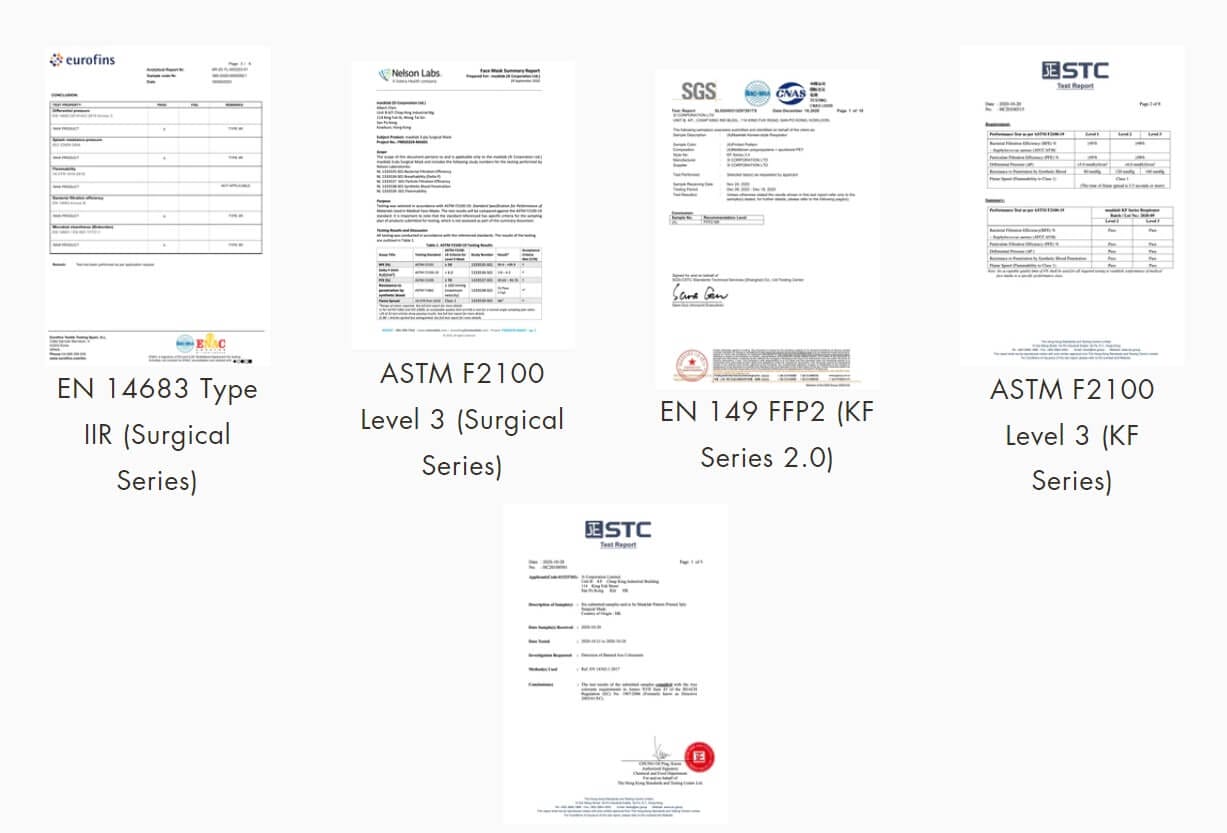
Masklab test results can be viewed here.
All Masklab KF-Series masks have been tested and approved FFP2 by SGS. However – this caused me a lot of confusion – EN149 (the FFP2 standard) requires that markings be displayed on the mask, as shown in the image below. This is a requirement for all FFP2 devices, yet these labels were missing on the Masklab masks I received.
Well, Masklab only includes these markings on its masks for the European market – specifically, Germany. EN149:2001 is the local respirator standard in this market, and Masklab must meet the local requirements. However, Masklab products from its other stores are unmarked. For example, I received my masks from the U.S website, and they were unmarked.
While I’m unsure of the reasons behind this, I believe this could be a design choice. Including all of the required markings from EN149:2001 would greatly detract from the design – something that Masklab puts a heavy focus on.
So, what’s the conclusion of this? Well, all Masklab masks are the same – they use the same filter media, are the same design, and perform the same regardless of where you purchase them. They have all passed FFP2 testing and have FFP2 approval. However, only European customers purchasing from the European store will have the required markings on their respirators.
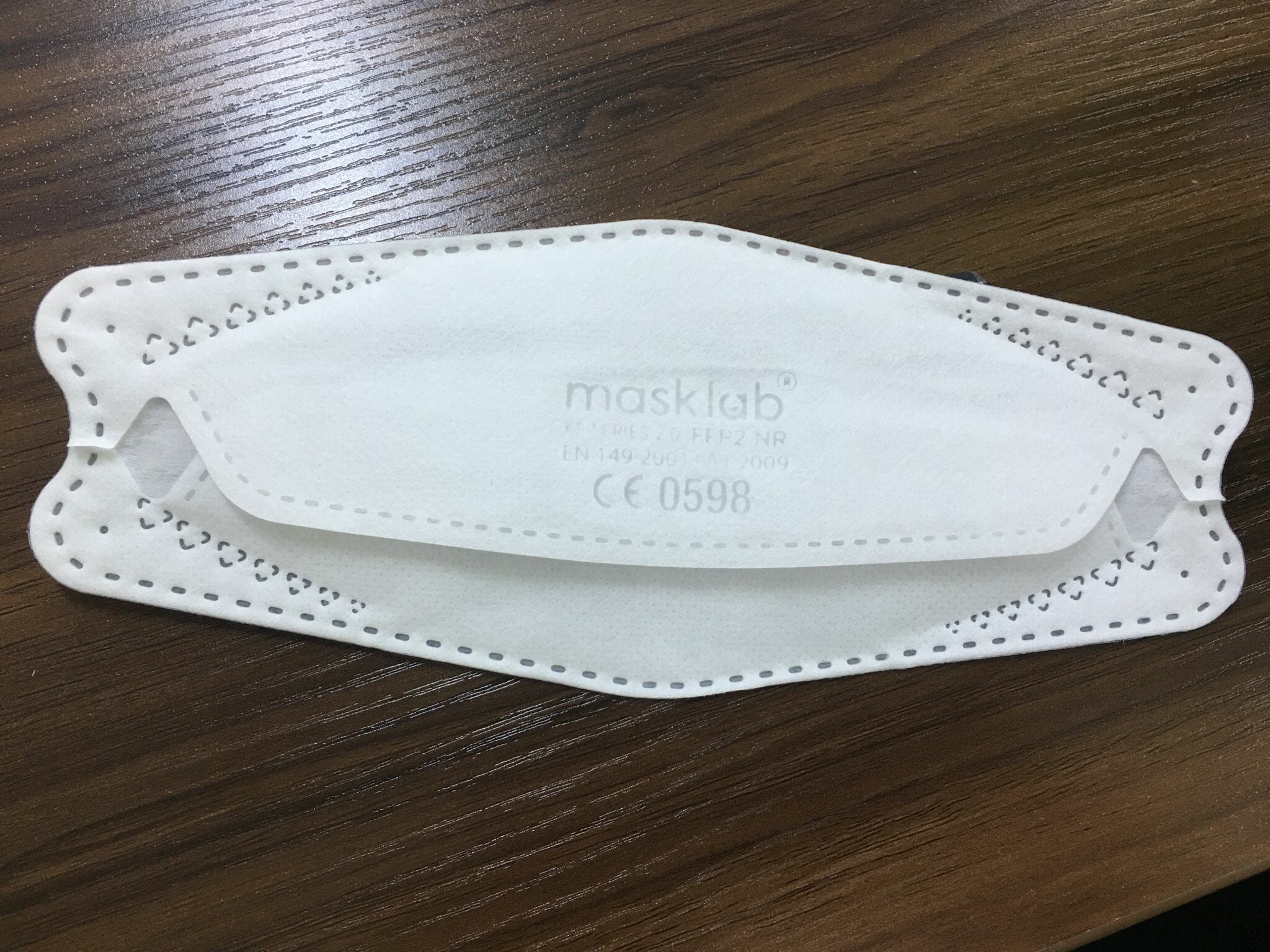
Labels on a German Masklab respirator
A little confusingly, KF-Series Masklab masks are not certified KF94. While Masklab masks are advertised as KF-style, it’s important to remember that this is regarding the design, not the standard. That said, the FFP2 and KF94 requirements are almost identical, and the fact that these masks are approved FFP2 means they also meet KF94 requirements.
With that being said, Masklab is ASTM F2100 (Level 3) compliant. This surgical mask standard is used in the US (ASTM F2100). Further, Masklab is FDA approved and holds a CE mark. Therefore, Masklab’s KF-Series are seen as Level 3 in the U.S from a purely standards point of view. While Masklabs surgical masks have also been tested following EN 14683:2019, the KF-Series have not.
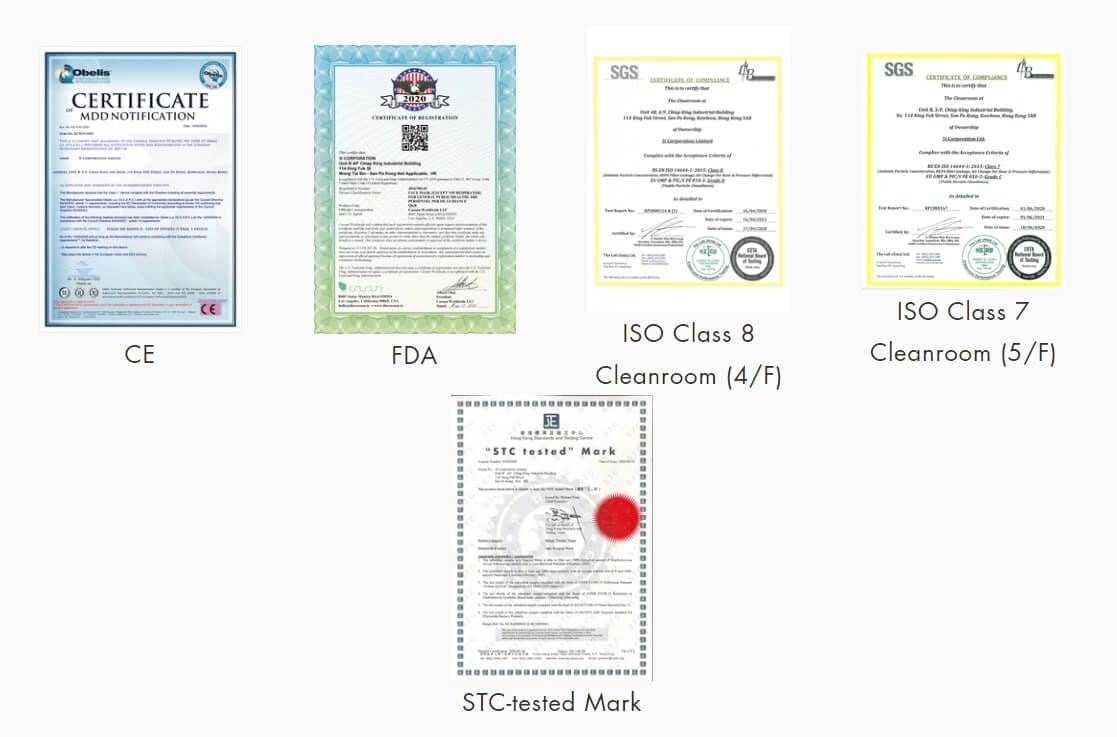
Looking deeper, Masklab masks have also undergone more stringent testing under EN149:2001 (FFP1, FFP2 and FFP3). Masklab KF-series disposable masks have undergone testing by SGS, a European Commission notarised body for respiratory device testing. SGS is a body capable of approving FFP2 devices, and they recommend FFP2 NR (non-reusable) as the device class for Masklab’s KF-Series.
Below is a list of the testing that Masklab’s KF-Series masks have undergone.
- EN149:2001 (respirator standard)
- ASTM F2001 (surgical mask standard)
All of this is to say that Masklab masks can provide a good level of protection (provided they are fitted correctly). For consumer-level day-to-day protection, these masks perform well. They perform significantly better than surgical and cloth masks and function similarly, if not better, than many KF94 devices.
Purchase & learn more about Masklab masks
Filtration
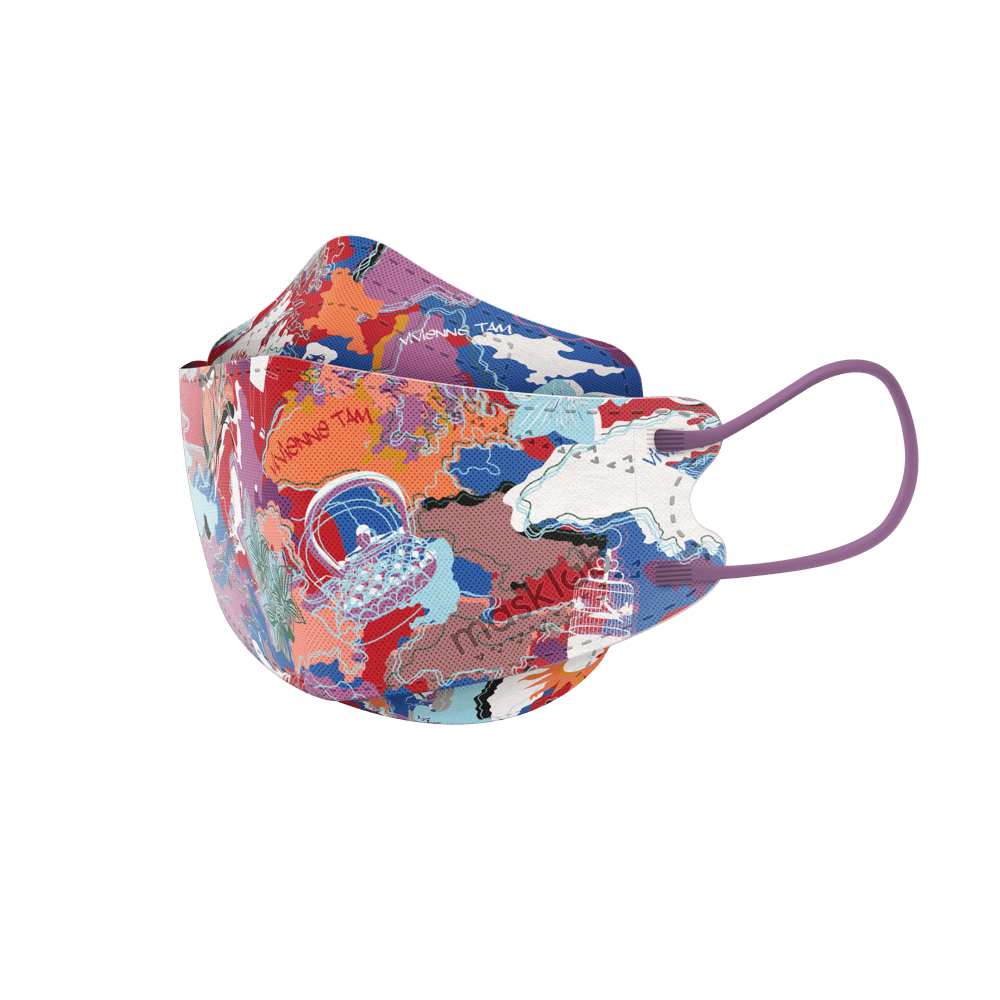
Although EN149:2001 for FFP-approved devices requires many different specifications to be met, the most important for the end-user are filtration, breathability and total inward leakage (TIL). Through SGS testing, all of these three aspects were tested.
In particle filtration efficiency tests (PFE), Masklab KF-series masks achieved ≥ 96.7% filtration. This was a worst-case scenario; most tested masks (as received and under simulated wearing treatment) provided ≥ 98% filtration. As this testing is carried out at a flow rate of 95L/min, filtration is likely higher at lower flow rates (such as resting breathing rates).
| Standard | Filtration | Breathability |
|---|---|---|
| EN149:2001 | ≥ 96.7%* | ≤ 3.1mmH2O (30L/min) |
| ASTM F2100 | ≥ 99.9%* | ≤ 4.7mmH2O (8L/min) |
Breathability for Masklab masks is also good, with inhalation and exhalation resistances staying well within the requirements set by the standard. At 30L/min (inhalation), the masks had 0.2-0.3 mbar of resistance where the standard requires ≥ 0.6. At 95L/min, Masklab’s mask had 1.1-1.2 mbar of resistance where the standard requires ≥ 2.1 L/min.
This indicates that inhalation resistance at all flow rates is significantly below what the FFP2 standard requires. With mbar converted to mmH2O, this is about 11-12mmH2O breathing resistance at 95L/min, better than many N95 respirators. If you have experience wearing an N95, FFP2 or KN95 respirator, expect similar or better breathability here.
Under ASTM2100:19 testing, STC Group (a third-party lab in Hong Kong) tested particle filtration efficiency, bacterial filtration efficiency and breathing resistance. In addition, Masklab KF-series masks passed all requirements for ASTMF2100:19 Level 3.
To achieve this level, masks must have ≥ 98% filtration for both BFE and PFE while having a breathing resistance of < 6mmH2O. Moreover, masks must also be blood resistant when tested against synthetic blood and have a low fire spreading speed. However, these aspects aren’t relevant to consumers.
| Test type | Filtration Efficiency | Flow Rate |
|---|---|---|
| PFE (0.1µm) | ≥ 99.9% | 28.3L/min |
| BFE (2.8µm) | ≥ 99.8% | 28.3L/min |
| PFE (median 0.6µm) | ≥ 96.7% | 95L/min |
Actual bacterial filtration efficiency was ≥ 99.8%, with four out of five filter media samples showing ≥ 99.9 BFE. Particle filtration efficiency against 0.1µm particles at a flow rate of 28.3L/min (as per ASTM F2299) was ≥ 99.9%. This is an impressive filtration result, even at the lower flow rate compared to EN149:2001. Please refer to this article if you’re interested in the differences between the standards.
STC Group again tested breathability for ASTM F2100 compliance. In these tests, breathing resistances of 4.3 to 4.7mmH2O were recorded at a flow rate of 8L/min. While this is a low flow rate (a resting breathing rate in most people), it shows that the Masklab masks are very breathable in resting and low activity situations.
All of these results come together to create a mask that provides a good level of protection while still remaining breathable. Provided the device is fitted correctly with no leaks, it should provide similar protection to other earloop masks such as KN95s and KF94s. On top of this, breathability is fantastic at lower flow rates and good at higher flow rates (such as during high levels of physical exertion).
Purchase & learn more about Masklab masks
Fit
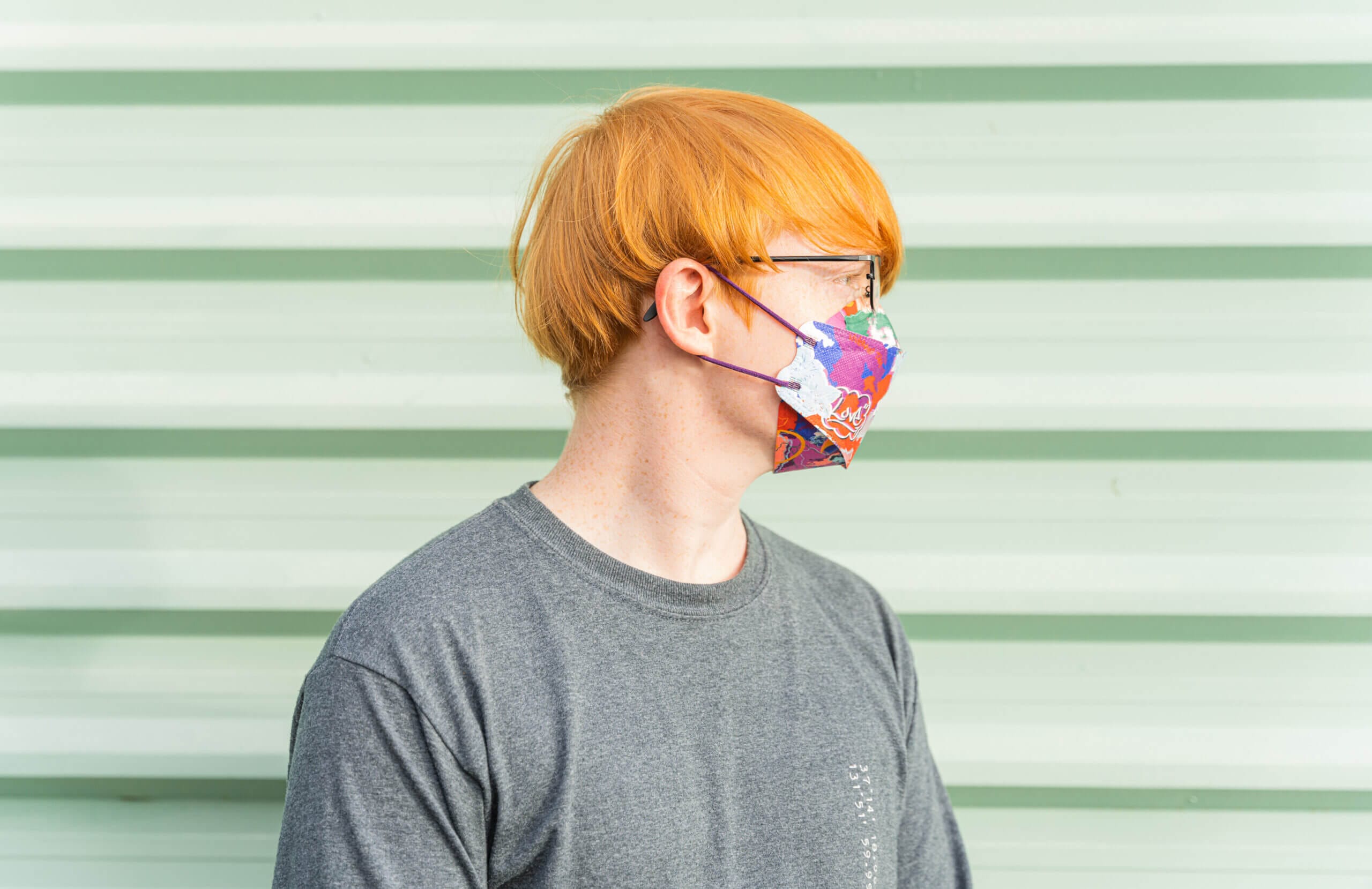
Before discussing the fit of the Masklab KF-series masks, it’s important to mention that these experiences are purely my own. Therefore, while I will share the total inward leakage test results from the SGS lab testing (which indicate fit on various subjects), the thoughts shared from my personal experiences are only that – my personal experiences.
Everyone has a different facial structure, and masks will fit everyone differently. As such, I cannot determine if these masks will fit you or not. Instead, I can provide feedback based on my experiences to help you determine whether or not the mask might be a good choice for you.
With that out of the way, how do Masklab masks fit? You will have a good idea if you’ve ever donned a KF94 mask before. As the name suggests, these masks closely follow the trifold/boat design of typical KF80 and KF94 masks. There are no major differences; therefore, if you’ve donned a KF80 or KF94 boat-style mask before, you will already know how these masks will fit.
If you are considering picking up some masks from Masklab, I would highly recommend purchasing some cheaper KF94 masks first. You can often buy these individually for a low price (a couple of dollars or less), and you can test them to determine the fit. If they seal well, so will masks from Masklab. On the other hand, if you struggle to maintain a seal, you will likely struggle with Masklab masks.
KF94 masks can be finicky to get a good seal with. I can usually achieve a good seal, but I always make sure to purchase a size slightly smaller than what my facial measurements would dictate. Buying slightly smaller masks allows me to achieve a better seal as the mask sits closer to my face.
The one problem I have with standard KF94 masks is that the earloops are almost always too loose. For this reason, I recommend getting a cheap plastic clip or headband accessory. These are available on Amazon for a few dollars for a pack – otherwise, you may already have some on hand from other masks (KF94s often come with them included).
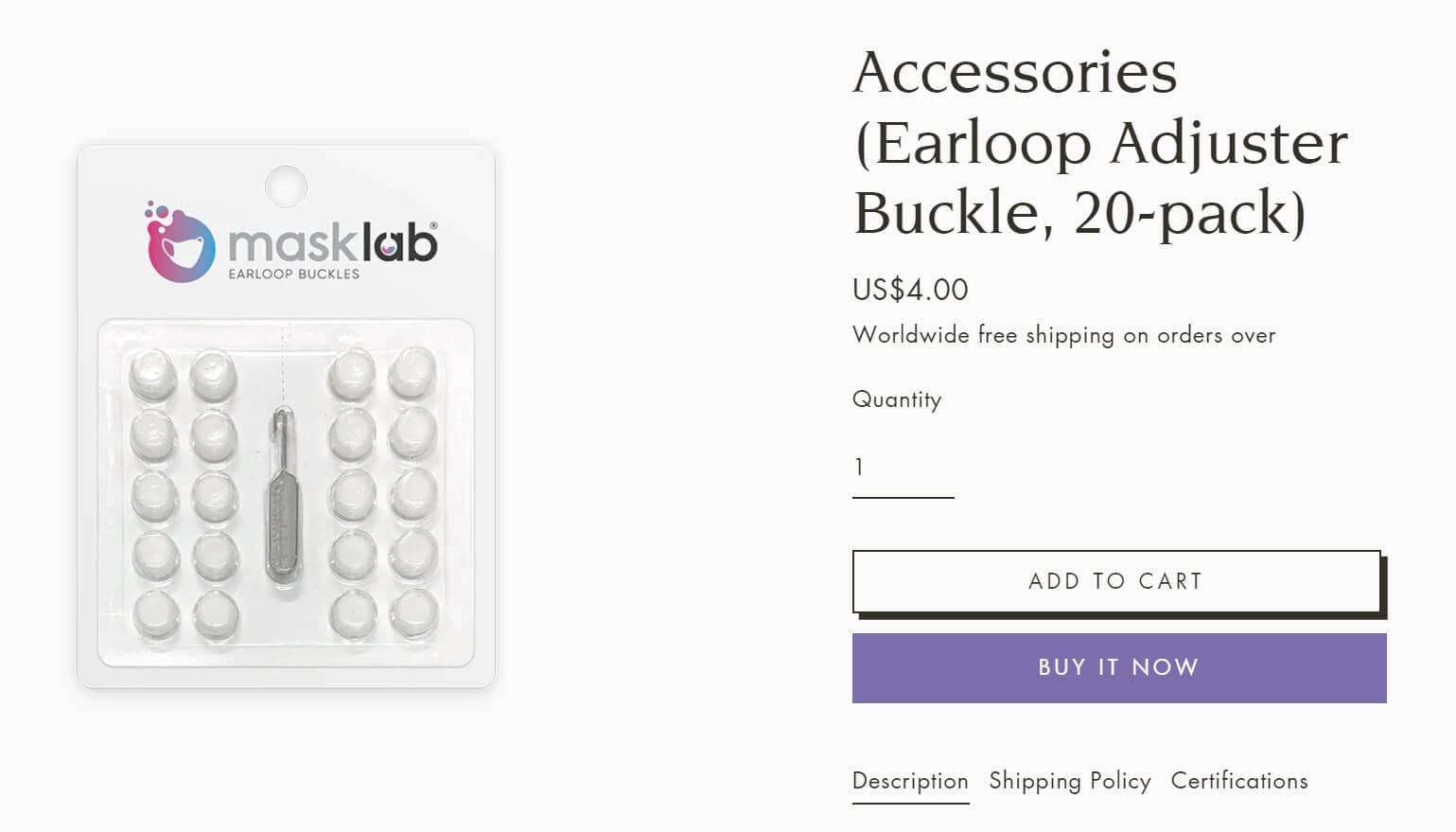
Masklab offers its own earloop buckle accessory pack for a fair price.
Masklab masks suffer from the same problem as the earloops are very thin and too stretchy to provide a good seal out of the box. Luckily, this is an easy fix, and by adding a clip, I was able to achieve a much better fit. It is also possible to tie the earloops to make them shorter. However, it’s often hard to get the earloops to equal lengths, and therefore I avoid this method when possible.
Once the earloops were adjusted, I did some positive and negative pressure seal checks and found leaks to be minimal. I did experience some leaks around the bridge of my nose but these were easily removed with some minor positioning adjustments.
If you’re looking for an even better fit, a mask brace will provide a closer seal with fewer leaks. However, I didn’t feel like it was essential in my case, as leaks were already minimal after adding a clip to the device.
In lab testing, results showed Masklab masks to be within the leakage requirements of the FFP2 standard. This testing was carried out on a range of subjects wearing the mask while performing a variety of movements and actions. Throughout the time the subjects were performing these movements, the leakage of the mask was tested.
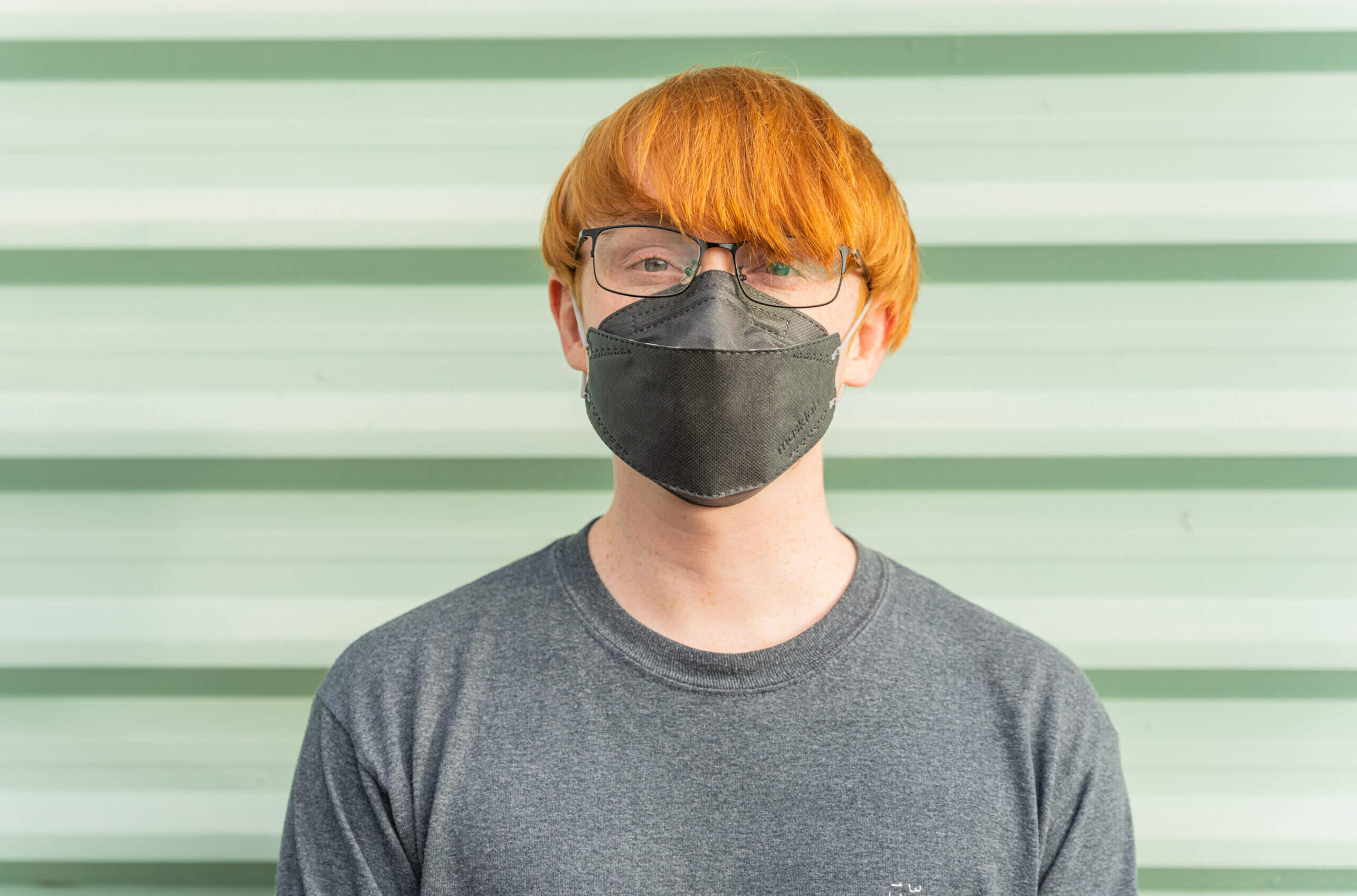
Ten human subjects are tested performing five actions – walking, head turning from side to side, up and down head movements, talking, and walking again. This makes for a total of 50 measured movements. For FFP2 approval, 46 out of 50 results must not exceed 11% TIL (total inward leakage). Further, the mean leakage for at least eight out of 10 test subjects must not exceed 8%.
Across all 50 data points, Masklab KF-series devices never exceeded 6.35% TIL. The mean leakage across all tests was 4.68%. This indicates that the Masklab mask provides a good seal with minimal leakage on various test subjects. In no case did the masks exceed the TIL requirements required by EN149:2001.
It is important to note that SGS carried out this lab testing in Hong Kong on a range of individuals from the area. This means that these TIL results apply to individuals with facial features common in Hong Kong. However, people from other regions may have different experiences.
Overall, the fit of Masklab masks is good. The masks can seal well not only on me but also on a range of test subjects during third-party lab testing. Since a good fit is crucial for good protection, this is a good result.
If you’re considering purchasing a mask from Masklab, I have to reemphasise my earlier advice. Try some KF94 masks or KF-style (boat-shape) masks. If these fit you well, so too will Masklab masks. This will allow you to confirm the fit before purchasing a larger quantity of masks.
Purchase & learn more about Masklab masks
Comfort
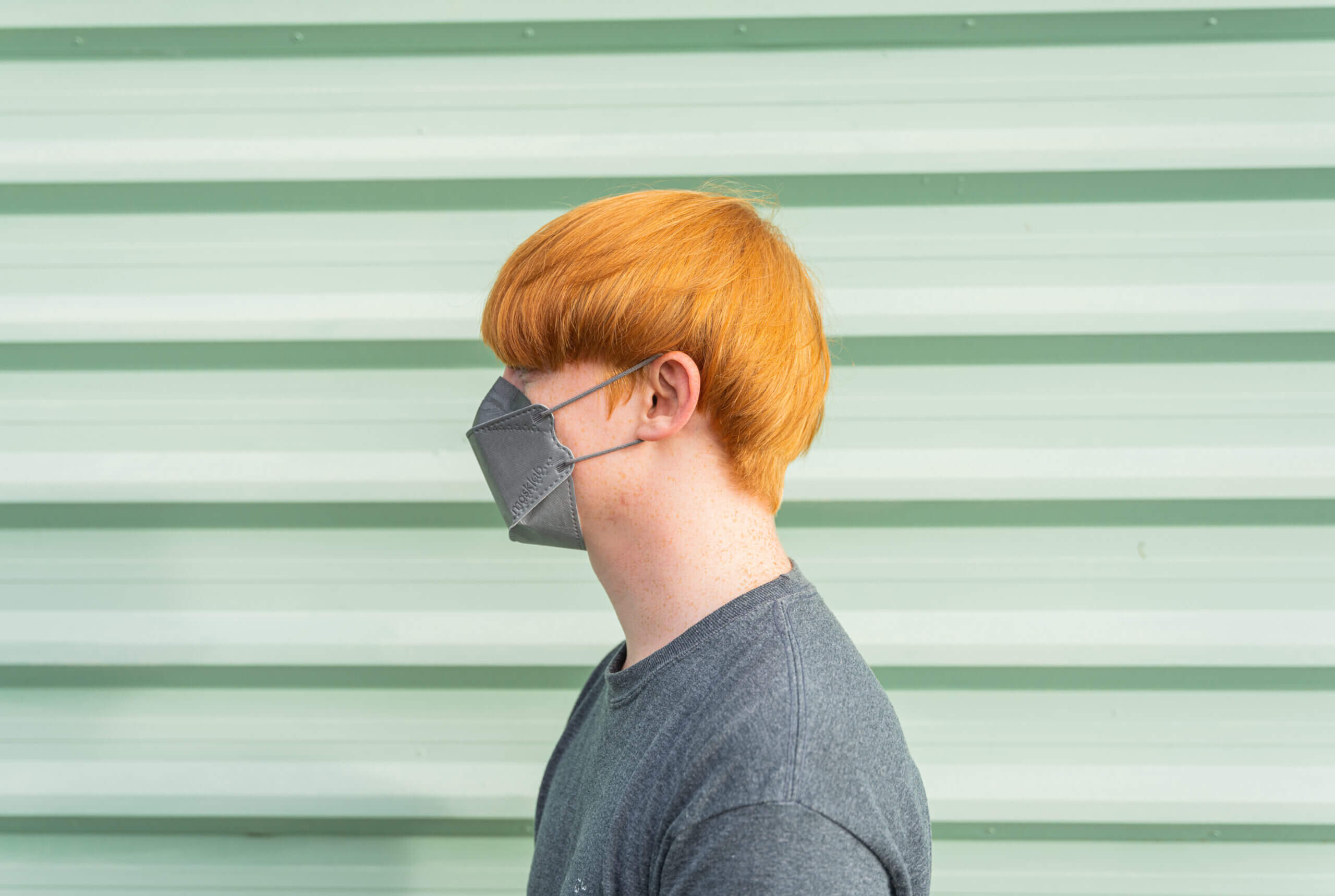
Masklab’s KF-series masks are very comfortable and easy to wear, which is one reason why KF-style masks have become so popular. While they generally don’t provide the same protection as N95 respirators (due to the poorer fit), KF94 masks are very easy to wear, even for long periods. The same stands true for Masklab masks.
Compared to a traditional KF94 mask, the most significant difference that I noticed was how light and breathable the Masklab masks are. The best comparison I have is AirQueen FFP2 masks. Both AirQueen and Masklab masks are very light and breathable. Unless I was heavily exerting myself, I found breathing resistance barely noticeable.
The breathing resistance was still acceptable and better than many other competing masks when exercising. Breathing resistance will always increase as the flow rate increases, which is not a mark against Masklab masks. However, at higher flow rates, there are more breathable disposable masks out there.
Due to the lightweight design of the mask, the microclimate within was also not an issue. Thicker masks often become humid, hot, and generally uncomfortable when physically exerting yourself or during hot weather. Luckily, Masklab doesn’t suffer from this issue like N95, KN95, or even many KF94 respirators do.
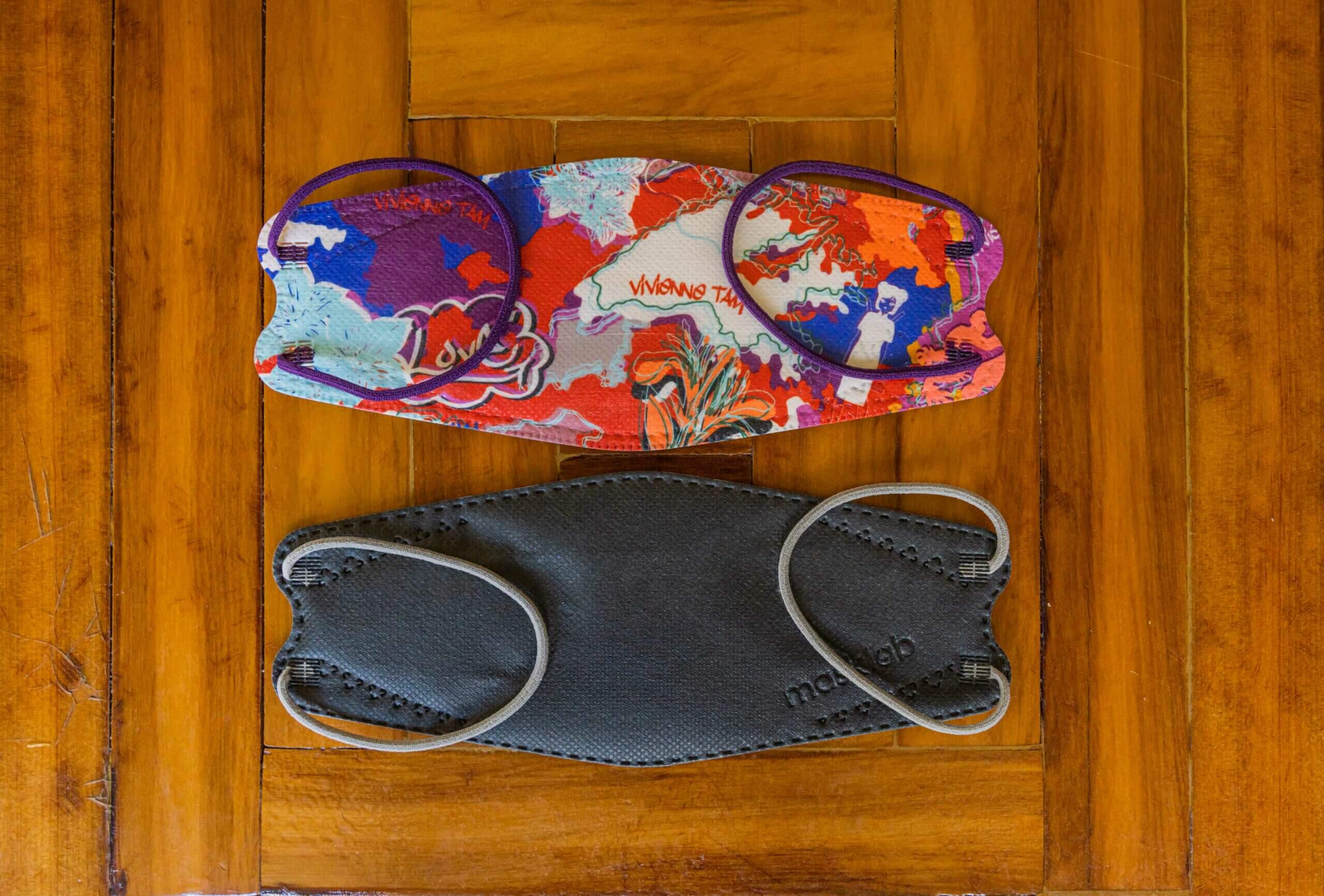
For this reason, Masklab masks are great masks to wear when out and about. They remain more comfortable than other disposable masks and respirators regardless of the weather. Due to this, I recommend masks from Masklab for anyone living in a warmer area or who regularly wears masks outside.
Filter collapse is another area in which Masklab has succeeded. Filter collapse occurs when you inhale or speak, pulling the filter towards your mouth. This is not only inconvenient (as it can get in the way of speaking and talking), but it can impact the performance of the device.
Many bi-fold masks (such as typical KN95 respirators) suffer from filter collapse due to a lack of structural strength. Luckily, most KF94s don’t suffer from this issue due to the increased strength and support of the trifold design – the same stands true for Masklab. Over a couple of weeks of wearing the mask, I never had a severe filter collapse that interfered with breathing or speaking.
The mask would pull in when I inhaled, but never to the point that it interfered with communication or breathing. This is a significant benefit, as anything that gets in the way of necessary daily actions is hugely frustrating.
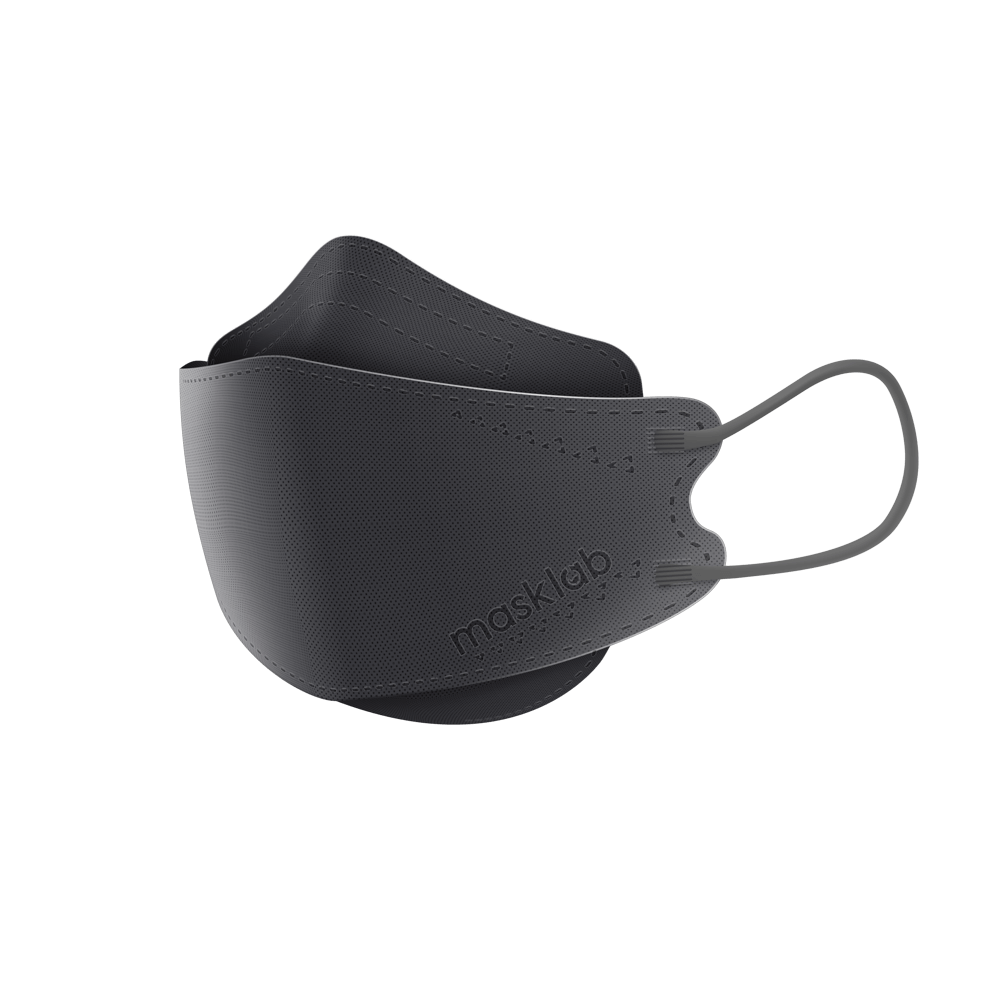
The final aspect that I want to focus on regarding comfort is the earloops. Headbands tend to fit better alongside being more comfortable over more extended periods (as they more evenly spread the mask’s weight). However, with Masklab masks, I was appreciative of the choice to use earloops.
Since the mask is so light, there was little to no weight on my ears. Even when tightened, I found that they were not cumbersome. With that being said, I did opt to wear the masks with a clip attached at most times to make them fit better. Comfort with the clip was similar to wearing the masks as they came.
Purchase & learn more about Masklab masks
Design
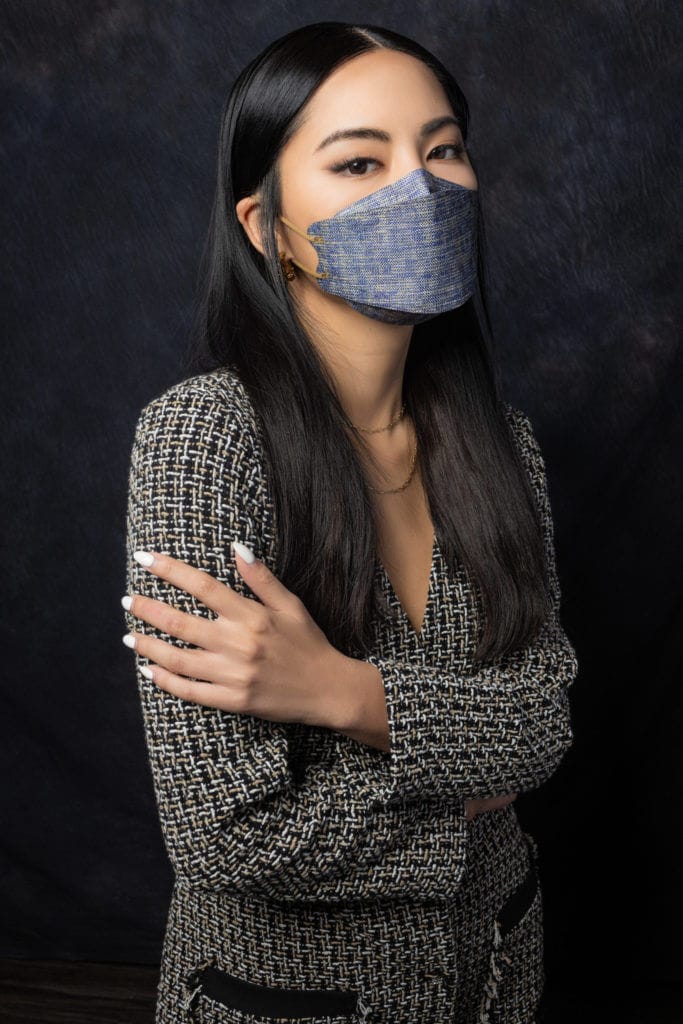
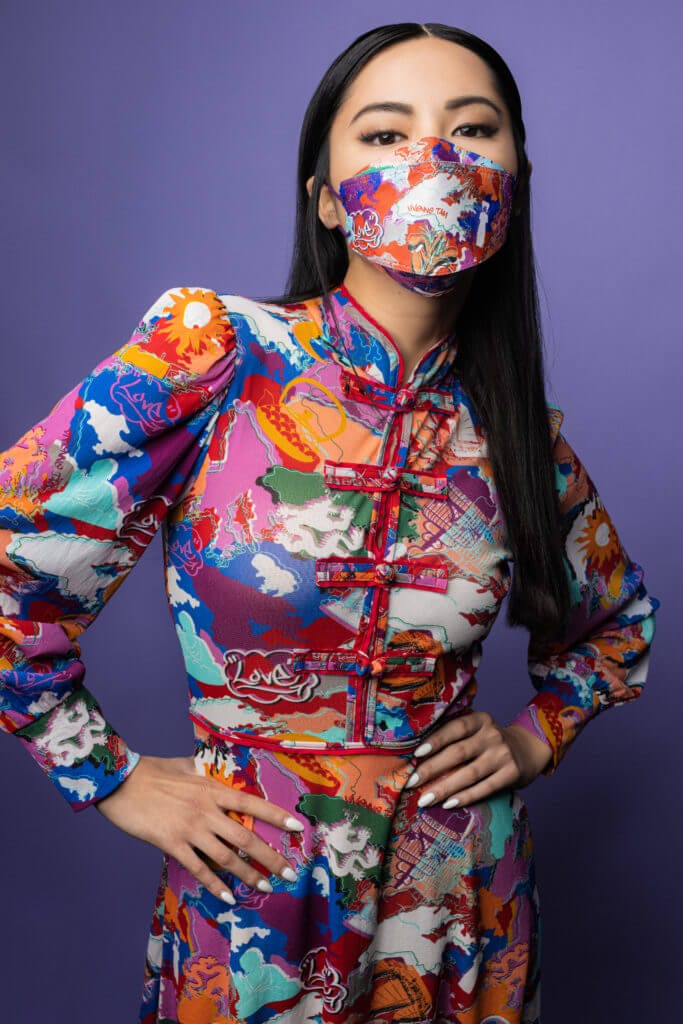
While I don’t usually discuss design in my mask reviews, it’s essential for this review. Masklab has become famous on the back of its stunning masks. To be frank, I’m not a fan of brightly coloured, complex designs or otherwise eye-catching masks. However, with Masklab, I really like some of the designs.
Masklab has a range of masks in solid colours for people like me. These are the basic masks, and they look similar to other black/white masks that you can see commonly worn. If you’re looking for something slightly more interesting, there are also gradient masks available – these masks have a slight colour change but don’t stand out too much.
However, I highly recommend trying some of Masklab’s more unique designs. While there are many fashionable masks out there – Mau Masks, Airinum’s Urban Air Mask 2.0, and Vogmask, to name just three – none come close to Masklab.
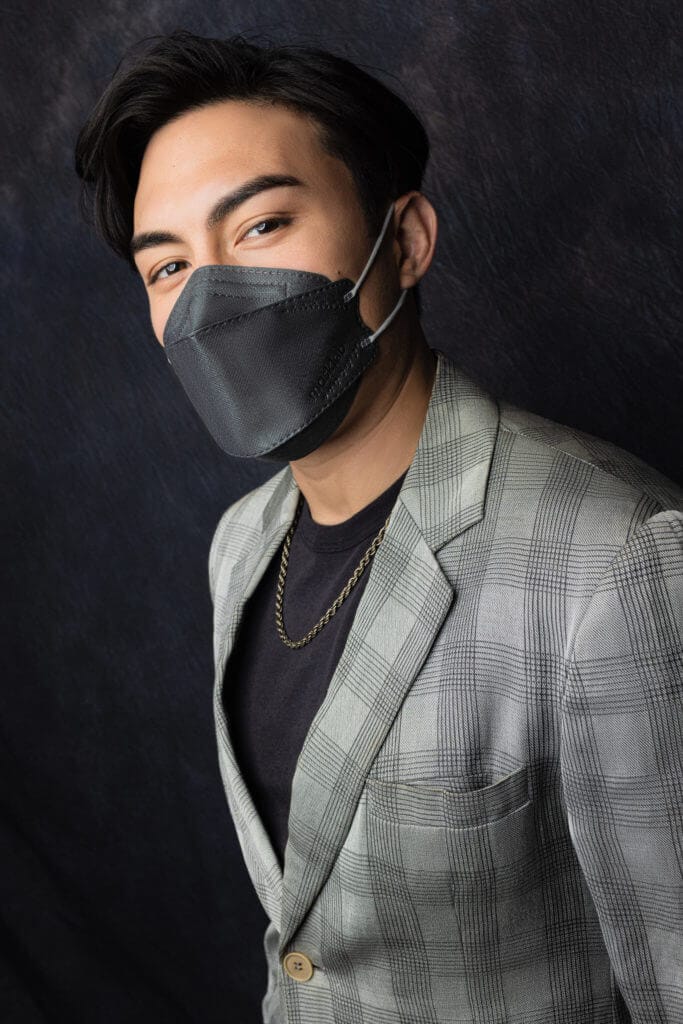
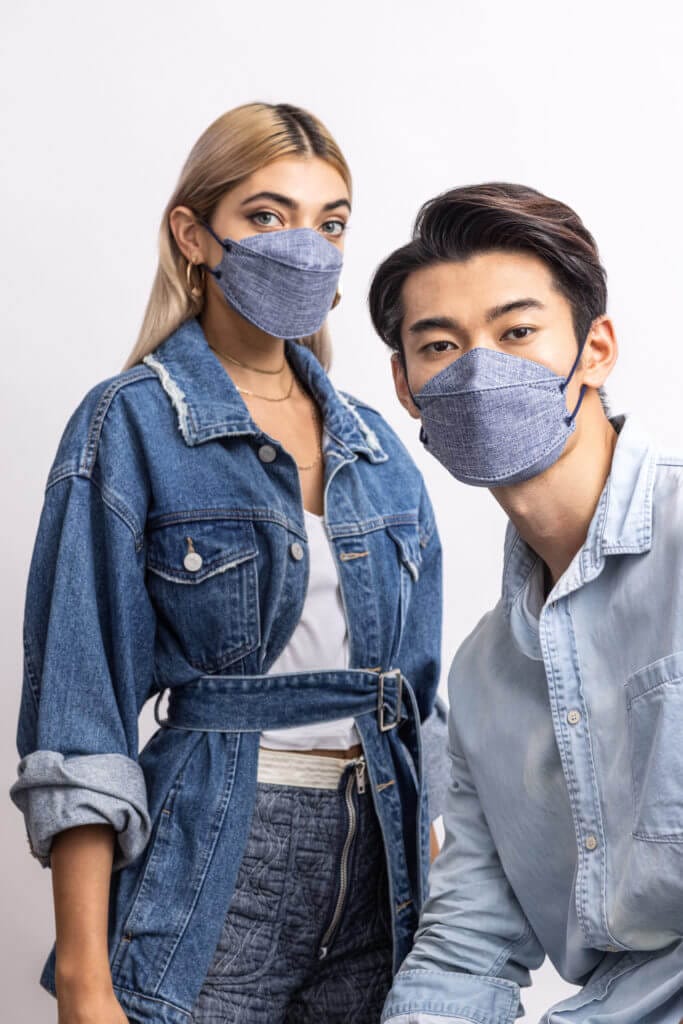
All of these manufacturers and many more rely on patterns and other designs. While these can look nice, they aren’t close to Masklab. Why? Because Masklab actually commissions local artists. This means that many of the designs that you will see on Masklab masks can’t be seen elsewhere.
The most unique mask that I received was the City Camouflage design from Vivienne Tam. The design is stunningly colourful, and I spent at least a couple of minutes just looking closely at the intricacy and layering of the artwork.
With over three pages of designs currently and surely more to be added soon, there is a design for everyone on Masklab’s website. I recommend checking out the designs, even if you aren’t a person that usually likes such masks.
Purchase & learn more about Masklab masks
Price and Lifespan
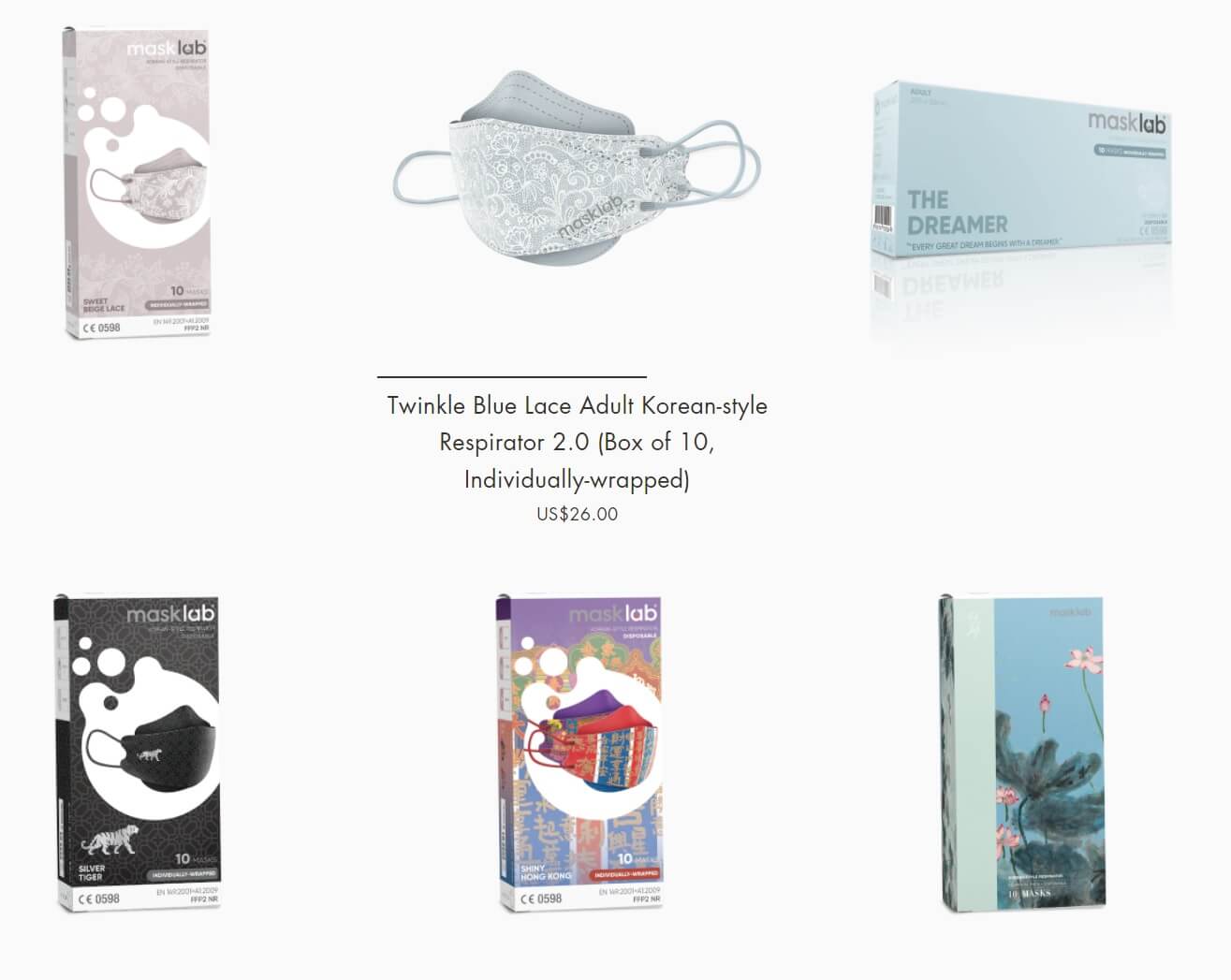
For this section, I will rely on the prices on the global store as this is Masklab’s primary website. However, Masklab has a range of stores for different regions, and your prices may vary.
Masklab masks range from $26-$30 per KF-series product. This price appears to be based on the style – collaboration pieces cost $30, whereas standard designs cost $26. This puts the price per mask at $2.60 – $3.00 with no discounts for bulk purchases.
All of these masks are individually wrapped, which ensures that opening the box will not degrade the other masks, even if they are used later. This also means that it’s easy to share some of the masks with others.
For comparison, at the time of writing, you can get 25 KF94 masks from a verified authentic brand for the same price. Another brand is selling legitimate KF94 masks at 20 for $28. Both of these items are significantly cheaper than the masks from Masklab. They are also officially certified and listed on the Korean MFDS database.
However, although Masklab masks are more expensive, they do have a few benefits. Most obviously, you can match them with any outfit. Many of the designs are fantastic for making a statement – Masklab masks stand out among many bland white and black masks that are more commonly available. If you’re purchasing a collaborative mask, this money also supports the artist.
Secondly, compared to most KF94 masks, Masklab products have undergone more testing. The KF94 and FFP2 standards are almost identical; however, Masklab KF-Series masks have also undergone ASTM F2100 testing on top of the respirator standard. While this extra testing doesn’t impact the use of the mask, it’s reassuring to see more intense testing carried out through multi-standard testing.
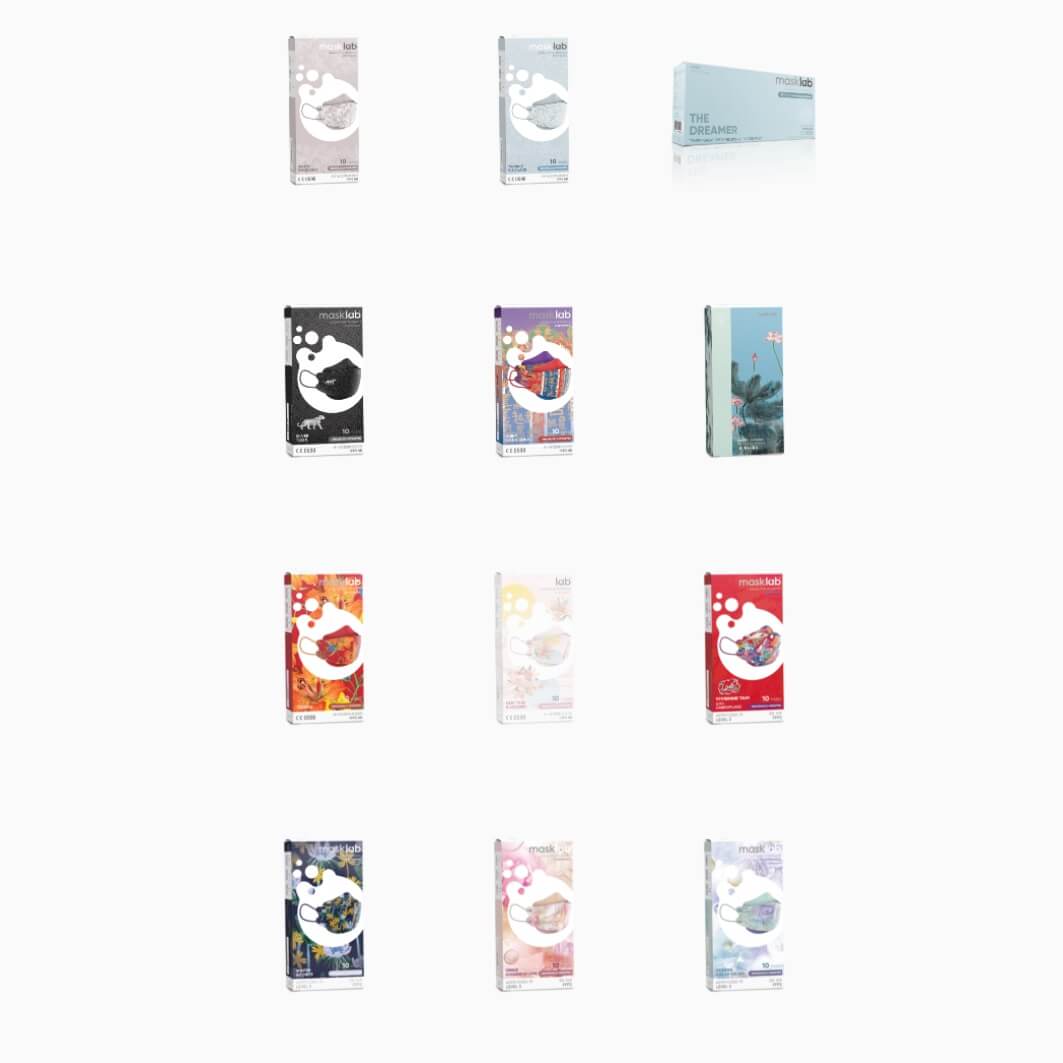
Purchases over $50 and $100 will get free shipping via international mail and DHL/UPS. This means that you will want to purchase at least two 10-packs from Masklab to get the best value for money.
In regards to lifespan, Masklab masks are disposable. This means that you will want to be replacing them regularly. For example, if you use them for viral protection, you’ll want to replace each mask after going into a high-risk environment or every few days (ideally, every day).
When it comes to air pollution, you can use the masks for longer. Depending on the AQI, each mask could be used for three to five days. When the mask becomes damaged, visibly discoloured (inside) or becomes more difficult to breathe through, replace the mask.
Overall, Masklab masks are slightly more expensive than KF94 respirators and quite similarly priced to cheaper N95 respirators. Regarding protection, they are more comparable to KF94 respirators, though, and this is the point of comparison that I will use.
Compared to KF94 respirators, Masklab masks are approximately 2x to 2.5x more expensive as of the time of writing. However, the masks offer a unique appeal that no other KF94 mask offers. While there are some stylish KF94s out there, nothing comes close to the designs that Masklab uses.
For this reason, I recommend that you make the decision based on your preferences. I would not rely on Masklab masks, but I would love always to have some on hand whenever I want to compliment my outfit and look stylish. These are the first fashionable masks that I’ve liked outside of solid colour designs.
Purchase & learn more about Masklab masks
Conclusion

I already largely made my conclusion in the pricing section. My thoughts are this: Masklab masks are a very unique and excellent idea. While I’ve seen many fashionable masks over my time running this website, I have never liked any of them as much as I’ve liked the Masklab designs.
If you want to complement your outfit, are looking for a way to stand out, or just want a mask that isn’t boring, Masklab’s KF-Series are a great choice. They are more pricey than comparable KF94 masks, and therefore they aren’t ideal for wear every day. However, they are well worth having on hand whenever you want to look great. They also make for great gifts!
The masks have been tested and surpassed the FFP2 requirements. Since the KF94 standard is based on the FFP2 standard and the form of the mask is almost identical to standard KF94 trifold/boat shape respirators, we can assume these masks perform very similarly.
Since these masks are so similar, there is a significant benefit in that you can judge whether or not they will fit you before purchasing. If you want to test the fit, go and find some cheap standard KF94s (in similar sizes) and fit-check them. If they fit, Masklab masks will too.
While offering good filtration as per EN149:2001 and ASTM F2100, Masklab also offers very breathable masks. I found that they feel more breathable than standard KF94s and closer to highly breathable masks such as those provided by AirQueen.
Masklab does not sacrifice function when emphasising form. While these masks won’t be for everyone, I know many people who love them and keep purchasing more. I will also be buying more when new designs come out!
Purchase & learn more about Masklab masks
Masklab KF-Series FAQ
Where Can I Buy Masklab Masks?
You can purchase Masklab masks from their website. Masklab also has different websites for some regions.
What Styles Does Masklab Have?
Masklab has more styles than I can list. However, whether you want a stylish design or something simple, they have something that you’re bound to like.
What’s the Difference Between Masklab Surgical Masks & KF-Series?
Masklab’s Surgical Masks are in a surgical mask form rather than a KF-style form. They are also tested accordingly to surgical mask standards. KF-Style masks are tested according to the EN149:2001 (FFP2) standard.
Are Masklab Masks Certified?
Yes. Masklab products have been approved FFP2 NR (in Germany) and have passed ASTM F2100 at Level 3. They are also FDA certified.
Are Masklab Masks Lab Tested?
Yes. Masklab’s KF-Series has undergone testing following the EN149:2001 (FFP2) standard along with ASTM F2100.
Are Masklab Masks KF94?
No. They are KF-Style due to their design (boat-shaped, similar to a KF94 mask).
Are Masklab Masks Good?
Yes. They are a fantastic disposable mask. If you’re looking for a mask that balances form and function, Masklab is a great choice.
Have Questions or Comments?
Join the discussion on the BreatheSafeAir Community Forum. Ask any questions you have about air quality or adjacent topics and get quick answers!
Masklab Masks
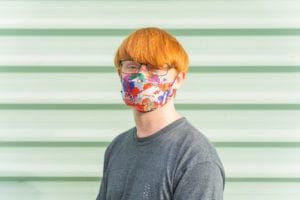
MaskLab's KF-series are FFP2 masks that are available in a wide range of colours and styles. If you're looking for protection while also looking great, Masklab likely has exactly what you're looking for!
Product Brand: Masklab
3
Pros
- Awesome designs
- Fit like a boat-style KF94/FFP2 mask
- Certified FFP2 (in some regions)
- Very breathable
- ASTM F2100 Level 3 compliant
Cons
- Quite expensive
- Loose-fitting
- No headband option
What makes the “Jetsetter” mask different from all of the other “masklab” masks?
Thank you so much for your help – greatly appreciated. I wear mostly n95’s which I order from NSW in Australia (I live in Perth WA) as they are equivalent to the n95’s which were worn in hospitals here, w/out the fit-testing – man,that’s something I’d pay for but doesn’t seem available for general public.
I was especially interested in masklab masks for certain occasions (eg upcoming wedding). After reading your article, I feel more informed. They certainly are works of art – stunning…
Hi Barbara,
I, too, wish fit testing was more readily available. I think a surprising number of people would be interested in it!
I couldn’t agree more regarding the art on MaskLab masks – it’s stunning and I believe they are perfect for situations such as weddings. I hope you like them!
This is such a helpful review! Thank you!
Have you looked at the documentation for or directly tested any of their newer styles of masks? In particular, I’d love to know what you think about the “2D Slim” masks, which appears to be an FFP2 bifold.
Cheers!
FYI BUYER BEWARE! I purchased several boxes of Masklab KF94 masks that have SEPARATED AT THE SEAMS while I was wearing them, obviously offering me ZERO protection. The company told me that I alerted them past their 90 day ‘complaint window’ — even though these masks have months before they expiration date and won’t replace them. Masklab doesn’t stand behind their product putting people at risk!